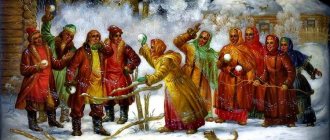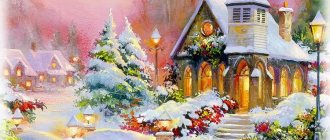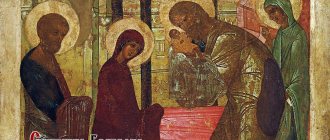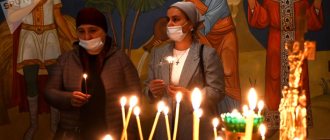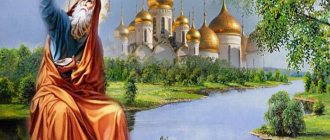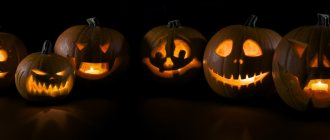One of the iconic images illustrating Halloween night is the silhouette of a witch flying on a broom against the backdrop of a huge, perfectly round moon. In fact, in the last hundred years, the full moon has fallen on October 31st only twice—in 1955 and 2001. A rare coincidence, according to the plot of Roger Zelazny’s novel “A Night in Dreary October,” makes it possible to open the Gate to the world of the Ancients, then a battle takes place between the Openers and their opponents, the Closers. Such a night awaits us in 2021.
When and on what date is Halloween 2020 celebrated in Russia?
The evening before All Saints' Day is celebrated on the night of October 31 to November 1. The meaning of the action is to scare away and protect yourself from the spirits who are organizing an unprecedented revelry that night, and, of course, to have fun.
Will you be celebrating Halloween?
Yes, I will
72.88%
No, I will not
27.12%
Votes: 59
The most popular autumn holiday in the USA and Western Europe came to the CIS countries only in the 90s. Now, in 2020, by the end of October, most shops and entertainment venues decorate their interiors with Halloween attributes, and witches and ghosts on the streets do not seem exotic. Cafes and restaurants offer original dishes for Halloween. But these October festivities did not become widespread. According to the latest sociological survey conducted in 2021 by Levada Center, only 5% of Russian residents celebrate Halloween, while 80% know about it.
However, Russians have opportunities for celebration, especially in large cities. You can “jingle ghostly chains” in one of the nightclubs hosting Halloween parties, or take part in events organized by shopping malls, cinemas and even museums. You can find a restaurant with an authentic menu, or buy dark decor and throw a party with friends.
Christmastide
Christmastide falls on the period from Christmas to Epiphany, that is, from January 7 to January 19. In the old days, at this time, girls used to tell their fortunes, their betrothed, and find out from higher powers what their marriage would be like. Christmastide is still shrouded in mysticism to this day - in some villages and cities the tradition of celebrating Christmastide has been preserved.
This doesn't really look like Halloween, you might be thinking. But the Russian folk holiday has one tradition that is very pleasant to our hearts - dressing up as mythological characters and going from house to house, that is, caroling. Guys dressed up as evil spirits, girls dressed up as gypsies and, gathering in “flocks”, went from house to house, glorifying the owners and jokingly demanding treats: “Whoever doesn’t give a pie, we will give a cow by the horns, whoever doesn’t give a crumpet, we will give a pig by the ankle...” According to village etiquette, caroling youth were seated at the table, given water and food.
Who celebrates Halloween?
The ancestors of modern Irish and Scots were the first to celebrate All Saints Day. In the 19th century, many natives of Ireland moved to the New World in search of a better fate, introducing the Americans to their culture. In the USA, Halloween took root, acquired new traditions and gradually spread throughout the world. Now the holiday has lost its religious significance; it is celebrated even in some East Asian countries that are far from Western culture, such as Japan, Singapore and South Korea.
Symbols and attributes
In many ways, the popularity of Halloween is due to bright, catchy symbols. Reminiscent of the mystical, frightening part of the world, they play with it in a cheerful way, overcoming the eternal fear of death and darkness.
- Jack-o-lantern. The hallmark of Halloween is a jack-o'-lantern with an ominously grinning face carved on it. In English-speaking countries it is called "Jack-O-Lantern". According to legend, Jack is a restless soul, doomed to wander the earth until Judgment Day, lighting his path with a coal sheltered from the rain in a hollow pumpkin.
- Ghosts and skeletons. Amusingly stylized images are used to decorate the home or sweets. For example, ghost-shaped cookies are popular. These images are an echo of the Celtic beliefs that the spirits of the dead visit the world of the living on All Hallows' Eve.
- Mystified animals. First of all, these are black cats and crows, as faithful companions of witches, bats, considered the embodiment of dark forces, and spiders, scary for many. In the Middle Ages, this list included the owl, whose cry was believed to foretell misfortune.
- Orange and black. Halloween colors are the main ones in the festive decor of rooms and dishes. The combination symbolizes the transition from life to death, from the bright colors of autumn to the darkness of winter.
Advice!
Music will help create the appropriate atmosphere. Songs such as “Thriller” by Michael Jackson, “Werewolves of London” by Warren Zevon, “Creep” by Radiohead, “Hells Bells” by AC/DC, “Sympathy For The Devil” by The Rolling Stones and, of course, are perfect for a home Halloween party. , "This Is Halloween" from "The Nightmare Before Christmas".
Semik
Another East Slavic holiday associated with the remembrance of the dead, but with several features.
Firstly, this happened in the spring-summer period, which sets it apart from other similar days. Secondly, special attention was paid to the “hostage” dead - those who died an unnatural death. Moreover, the main figures on behalf of the “hostages” were the drowned. In some areas of the north they believed that this day was intended for them. People believed in this so much that they were afraid to carry out any manipulations with water on this day, otherwise, they believed, one of their loved ones would definitely join the ranks of drowned people in the near future. But this day was not only a memorial. A special place was occupied by events dedicated to stimulating soil fertility. The farmers walked, danced, had dinner, played circular games in the fields - all so that later the crops would grow abundantly. Fertility was asked not only for the fields, but also for girls who did not have children. After all, someone has to collect all these crops later.
The farewell to the mermaids, which took place in the days leading up to the seventh week, called Green Christmastide, deserves special mention. These were traditional songs and dances by the river, sometimes accompanied by seeing off a mummered mermaid (a ritual similar in meaning to the burning of an effigy on Maslenitsa). This is where the fairy tale comes to life. Not only did they remember the drowned people with particular passion, but they also chased mermaids, which some considered to be the very spirits of the drowned, while others considered them to be devilish creatures dragging poor villagers into the water forever. The men were afraid that they would come for them, so they covered themselves with herbs and amulets. Women were luckier - the mermaids only needed yarn from them, which these days, crawling out of the rivers (in our folklore, mermaids were more mobile than in the Disney cartoon), they spun on the shore or tree branches. Such stories finally explain why the hell Pushkin’s mermaid is sitting on the branches of that oak tree near Lukomorye.
Costume: field and Mavka In addition to the merman, goblin and brownie, in our mythology there is a field costume. It's not hard to guess where this guy lives. And since Semik is associated with the accumulation of soil fertility, the figure of the field will look quite logical on this holiday.
Mavka is the closest thing to the meaning of the word “mermaid” in Ukrainian mythology, who, however, loved to live in the forest. So a fantasy that combines the image of a mermaid with a dryad may give birth to something that will outshine the costumes of naughty schoolgirls and policewomen.
History of Halloween
Modern Halloween is the incarnation of the ancient Celtic calendar festival of Samhain, which was one of the four key events of the Wheel of the Year. According to ancient Irish beliefs, the dark, “night” half of the year begins on November 1. Samhain is its twilight, epilogue, the antipode of May Beltane, which marks the beginning of the light period.
These beliefs reflect the Celtic ideas about the cyclical nature of life, ideas about the loss and restoration of strength by nature, dying in the fall and rebirth in the spring. Samhain rituals are associated with understanding death and the other world, with summing up, completing things, with what in agricultural practices is called “harvesting.”
Day of the Goddess Mokosh
The holiday is purely pagan, which was highly revered by the ancient Slavs. Makosh is the patroness of nature, marriage, childbirth and, in general, all women and girls. It is impossible to say that mummers’ festivities take place on this day, otherwise it would not be true. The fact is that Goddess Mokosh Day is traditionally celebrated on the last Friday of October, that is, on the eve of Halloween. Like the ancient Celts, on this day they celebrated the approaching winter, and, starting from Mokosh Day, women began traditionally winter work: spinning, weaving, embroidery. There is an analogy in the contact of two worlds: on this day it was customary to conduct a two-ring round dance. One ring (outer) is twisted “salting” (in the direction of the sun) - for life, and the other is twisted “anti-salting” - for death. As for fertility, the name Makoshi has two roots: “ma” - “mother” and “kosh” - “basket of grain”. They prayed to her for the blessing of crops and asked for a bountiful harvest. According to legend, Makosh is a housewife - the housewife's wife, and Yaga. However, among the ancient Slavs she was placed in the same pantheon along with Perun. Experts believe that Halloween has a deep ancient connection with this Slavic holiday.
Alexander Arkhipov, member of the Tambov Slavic Community of the Socialist Military District of the Socialist Republic of Vietnam “Zhiva”:
- In addition to the fact that Mokosh Day is every Friday, it is widely celebrated several times a year - in spring, summer, autumn. We celebrate this day in the fall because Makosh, autumn are symbols of the earth, it is something giving birth. “Ma” means mother, “kosh” means fertility. A giving mother, a mother who is able to give her child a destiny. On this day we saw off the land for winter rest. Nature has two times of day, just as we have day and night, so nature has summer and winter. This year was fertile, and we thanked the earth for the harvest and wished pleasant dreams as we spent the winter.
Makosh is the guardian of fate, but she is two-faced. If you don’t behave according to the laws of your clan and land, bad times will come, there will be troubles, tears, lies. And whoever lives according to the laws of the clan, Makosh sends him a share, weaves a thread of fate. But sometimes Makosh also sends tests - these days there are especially many of them - this is how she tests the strength of spirit.
How do we celebrate Mokosh Day? There are three parts. The first is glorification, in this case Mokosh. The second is games. This is how we show our ancestors that we are having fun, that we are healthy in both body and spirit. The ancestors are pleased to see that we are strong, so they do not feel sorrow towards us, but joy, and strive to help us. The third part is feast and food. We gather at a common table, this time there were thirty liters of soup, several pots of tea and treats - who brought what. We eat and share information.
As for Halloween, I won't draw a parallel. Halloween is a holiday of the lower world, and, as we know, it is not to be joked with. People paint their faces to show off who has better makeup. There is only external meaning here. And in the last days of October, the line between the worlds becomes thin: you need to honor your ancestors, look into your soul, ask yourself “Who am I?” By honoring our ancestors, our roots, we are fueled by their strength. And in the case of Halloween, we reject these roots. And plus alcohol. As they said in Rus', alcohol is worse than theft, because it kills the soul. There is no alcohol at our holidays, so that people are conscious and responsible for their every action.
Traditions and rituals of Halloween
Modern celebration traditions recreate the atmosphere of a gloomy children's fairy tale, eerie and entertaining. Halloween also inherited some of the customs of medieval European masquerades.
The tradition of transforming into characters from scary stories - ghosts, witches, mummies, werewolves, without which it is impossible to imagine celebrating Halloween, appeared relatively recently. The first known dressing up of children in costumes was recorded in 1895 in Scotland. In the 20th century, the list of images expanded with literary and cinematic heroes - Freddy Krueger, Count Dracula, Frankenstein's monster and others took to the streets. The main thing is to create the most terrible image possible in order to scare away real evil spirits.
The well-known saying “trick or treat”, in the original less bloodthirsty - “Trick-or-treat” (treat or trick), appeared at the beginning of the 20th century. However, the custom of begging for sweets is much older; in the Middle Ages, not a single Christian holiday was complete without it. In those days, it was not children who begged, but beggars, who in exchange for food promised to pray for their dead relatives.
The house should be decorated with “spooky” decor for Halloween. Artificial cobwebs, garlands of spiders, images of ghosts, witchcraft attributes such as cauldrons, brooms and bottles of “potions” are used. The treat is also stylized in accordance with the general atmosphere - baked goods and sweets can be made in the form of spiders, eyeballs, fingers of a dead man, gravestones, skulls.
Dishes made from autumn fruits are considered traditional - pies and muffins, candied fruits, and sweets made from apples and vegetables. They also serve stuffed pumpkin. In Ireland, the custom of serving barmbrack for dinner on October 31st has been preserved. This is yeast bread with raisins and grapes, into which several small objects are placed for fortune telling: a pea symbolizing loneliness, a sliver - family troubles, a shred - poverty, a ring - wedding and a coin - wealth. In whose piece the object is found, the prediction is assigned to him.
Interesting!
An ancient fortune telling specific to Halloween is based on apples. An unmarried girl must peel the apple and throw it over her shoulder onto the coals. In the form that the burning skin will take, you can see the first letter of the betrothed's name.
Halloween Treat Ideas: Best Recipes
"Witch's Fingers"
spooky finger cookies for any other occasion than Halloween. But this holiday they will be more relevant than ever. They're pretty easy to make, even if you're not much of a cook.
You will need the following ingredients:
150 grams of butter 100 grams of roasted almonds 2.5 cups of flour 1 teaspoon of baking powder 1 cup of sugar 1 teaspoon of vanilla sugar 1 egg 1 tbsp. spoon of jam (red, of course) 1 pinch of salt
Remove the butter from the refrigerator to allow it to melt to room temperature. Add sugar to it and beat. Then mix in vanilla sugar and egg.
Beat everything together for 5 minutes. In a separate bowl, combine flour, salt and baking powder. Gradually mix the resulting mixture into the butter - the result should be a firm, but not sticky dough. We put it in the refrigerator for half an hour.
After 30 minutes, remove the dough from the refrigerator. We pinch off small pieces from it and roll them into sausages. We give each sausage the shape of a finger - flatten the dough on the sides at the top and bottom, then press down on top to make the “finger” flatter.
You can use a toothpick to draw stripes on the phalanges. We spread jam on the tip of the sausage, you can also use it to mark the wrinkles of your fingers. Then we put an almond on the tip of the “finger” - this is a nail - and press lightly.
We put baking paper on a baking sheet and place our “fingers” on it so that they do not touch each other. Place in an oven preheated to 180 degrees for 20 minutes.
Apples in caramel
This is a traditional Halloween recipe and a delicious treat for any occasion.
They are prepared simply and with a minimum amount of ingredients: small sweet apples - 5 pieces sugar - 8 tablespoons water - 2 tablespoons lemon juice - 1 tablespoon food coloring (red, of course!) - 3 drops of decoration: skewers/sticks sushi, mastic leaves, coconut flakes, crushed nuts, powdered sugar - it all depends on your desire and imagination
Before you start preparing the caramel, prepare the apples and decorations: wash and towel dry the fruits, remove the stems.
In the place where the tail grew, prick the apples onto wooden sticks. Place them in the freezer—they should be chilled, but not frozen.
Distribute the sprinkles among the plates, prepare the mastic leaves in advance - then you won’t have time for this.
To prepare caramel, mix water, sugar, coloring and lemon juice in a deep saucepan, put on medium heat, stir well.
Then reduce the heat to low and melt the sugar. The mixture can be gently stirred with a non-metallic spatula, and it can also be used to remove sticky sugar from the walls of the dish so that it does not burn.
As soon as the sugar melts, increase the heat - the caramel should simmer for 7-8 minutes and become homogeneous and slightly thick. After this, turn off the stove and let the caramel cool - the surface of a properly prepared mass should be smooth, without bubbles or irregularities.
While it is cooling, prepare a dish lined with parchment or greased with a thin layer of odorless vegetable oil - you will place the apples on it.
Remove the fruit from the freezer and pat dry with a towel to prevent condensation from remaining on it.
Place the fruit in the saucepan, holding it by the skewer. It is better to tilt the saucepan itself to one side, so the entire apple can be placed in the syrup. Distribute the syrup over the surface of the fruit, twisting it around its axis. Wait for the excess caramel to drip off and remove the apple from the saucepan.
If you want to decorate it with sprinkles, now is the time. Transfer the apple to the prepared dish and let it rest. The caramel hardens in a couple of minutes, so you can quickly serve the finished dessert. And from the leftover syrup you can form caramel candies.
Creepy Snacks
If you don’t want to spend time preparing special dishes, but want to celebrate Halloween, you can make any dish creepy. Show your imagination - add artificial eyes to dry snacks - nuts, chips, candies - let your guests find an unexpected surprise. Or decorate cut-up sausages with ketchup so that the plate doesn't look like a crime scene. Done, you are amazing, and your Halloween party will be the stuff of legends for a long time to come.
Was it Veles' night?
Apart from sites dedicated to modern pagan cults, there are no serious sources confirming this version. It is possible that both Belobog and “Veles’s Night” are an armchair invention of Russian Slavophile historians of the 19th century, an analogue of the Celtic tradition of Halloween. It is known about Veles that he is one of the most important deities in Slavic mythology, the antagonist of Perun; supposedly considered the guardian of livestock, as well as musicians and storytellers. After the baptism of Kievan Rus, Veles merged with the image of Satan.
Probably, in the Ukrainian tradition, an approximate analogy could be drawn between Halloween and Malanka - a traditional masquerade on New Year's Eve, dressing up women as men and vice versa, generosity and fortune telling.
Halloween attributes
Halloween has very rich attributes:
- Jack-O-Lantern (carved pumpkin with a candle inside),
- candles,
- costumes (scary and cool),
- decorating the home with carved and regular pumpkins, as well as thematic symbols in appropriate colors (orange, purple, green, black, red).
Jack-o'-lantern
Jack-O-Lantern is one of the main traditional attributes of Halloween. It is a luminous head carved from a pumpkin. The insides of the pumpkin are cut out and thrown away, holes are made for the eyes, nose and mouth, and a candle or any other suitable light is placed inside the pumpkin itself. Just be careful and follow all the necessary fire safety measures if you decide to make such a lamp!
